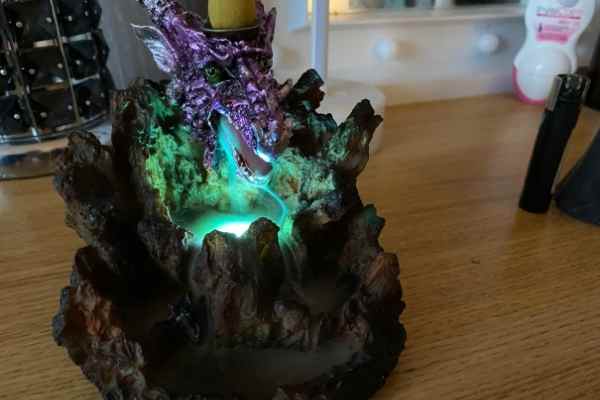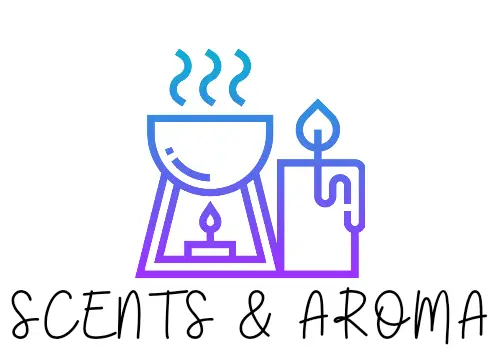Should smoke travel upward or backward? Well, in a typical scenario, smoke should rise. However, this is not the case with a backflow incense burner. Unlike a stick incense burner, the smoke flows downwards.
There are different types of incense in use today, each of different shapes and sizes. Apart from stick incense, a backflow incense burner is another popular form of incense. Let us help your curiosity and explain how a backflow incense burner works and why the smoke flows backward.

So how does a backflow incense burner work?
The burner uses a bit of physics to produce its magical backflow smoke movement. Generally, incense smoke contains tiny particles. As a result, they are denser than air at room temperature. When you light a typical incense, the smoke flows upward due to the heat that offsets the weight of its tiny particles. But, in a backflow incense, the smoke goes through a hollow center tunnel and cools. Then, it continues along the tunnel, and the smoke becomes denser. It ultimately exits at the bottom.
If you are not a fan of physics, the chances are that you would have missed some details with the jargon above. To help you understand better, let us break it into a more uncomplicated explanation.
If you would like your own amazing backflow incense burner check out this one on Amazon, it is great!
How a backflow incense burner works
Backflow incense burners create a waterfall effect with their smoke. The incense has a cone where all the magic happens. The cones are drilled through from just below the tip to the bottom.
When you burn incense, it releases warm air. The warm air is different from the air pressure in the room or around the incense. As a result, the warm air rises and carries the smoke.
However, a backflow cone used for the incense is hollow. Because of this, cool air from inside the cone mixes with the smoke. It then pulls the smoke down through the hole.
More explanations to make things easier
Heat causes combustion, and incomplete combustion causes smoke. Cool air is denser than hot air. So, when lit, the less dense hot air will rise. Hot air is lighter than cold air and automatically pushes the smoke up.
After lighting the cone, hot air pushes the smoke up. But remember, there is cold air at the bottom of the cone. There is also the air pressure pushing down on the cone from outside.
Divide the cone into four parts with markings. You can use a pen or visually divide the cone into four parts – 1-4. Forget the first part for now, when part two burns completely and progresses to the third, the backflow happens.
Although hot air forms around the lit area, air pressure also pushes down the cone. Then, the hollow body of the cone lets smoke pass through its body down.
Now that is for a breakdown of how the downward smoke works.
How to light an incense cone
Cone incense weighs more than stick incense. Remember that you divided your cone into four parts – the flames must consume the first part.
Hold the cone with tweezers or one hand and light the pointed end with a lighter or match.
Make sure the flame covers part 1 of the cone and put it out. This allows the incense to burn without fire. If the cone is not immediately up in flame, tilt it down so that the burn area will increase. Then, wait for about 10 seconds and put off the flame.
The flames of a cone incense may not stay lit like a stick incense. If the incense goes off, relight it. We recommend a lighter with a wand to avoid injuring your fingers.
After blowing out the flame, embers will start to glow, and smoke will start coming out from the bottom. If it doesn’t, you must have extinguished the incense by accident. In this case, repeat the process.
Place the cone into the incense holder, and it will burn completely without waste.
Backflow incense holder or burner
The incense burners are often a product of porcelain or ceramics. Thanks to a high-gloss glazed finish, the art pieces reflect the art that creates the illusion of a waterfall. The burners are also available in different varieties. For example, there are burners with Asian motifs like dragon or lotus. There are also various scents you can choose from, each with symbolic meanings.
How to put out a backflow incense cone
Unlike stick incense, it is not easy to keep an incense cone for reuse, and this is why. The most efficient way to put out the cone is to immerse it in water. This renders the cone useless, and you will have to discard it for a new one.
Before putting out the cone, wear protective covering to protect yourself from the heat and from burning yourself.
After putting out the cone, wait for the burnt cone to cool down, say about 10 minutes. Then, move your garbage can or trash bag close to the incense so you can pour without moving the incense holder. You can use a metal plate to till the burnt cone into the garbage can.
Backflow incense burner best practices
- Only use the burner on a heat-resistant surface that is not close to any flammable material.
- Never leave the incense unattended
- Never place the incense within the reach of pets and children.
- Wait till the burnt cone cools before touching the remnant. Also, don’t use your bare hands to touch the metal part of the burner.
Conclusion
You will enjoy a backflow incense burner best in an environment with no draft. Regardless, the burners are aesthetically pleasing and will add glam to any interior wherever you place them. Be careful, though, and make sure the incense cones don’t have any harmful chemicals that can cause harm if not used correctly.
That aside, you will enjoy the feel and sight of a backflow incense burner. We hope you now understand more about what makes it a backflow burner.
- Can You Put Perfume In A Humidifier? (Read First) - September 17, 2022
- Can You Put Essential Oil In A Steam Mop? (Safety Advice) - September 17, 2022
- How To Make Lavender Oil At Home ( Candles And Diffusers) - September 9, 2022
